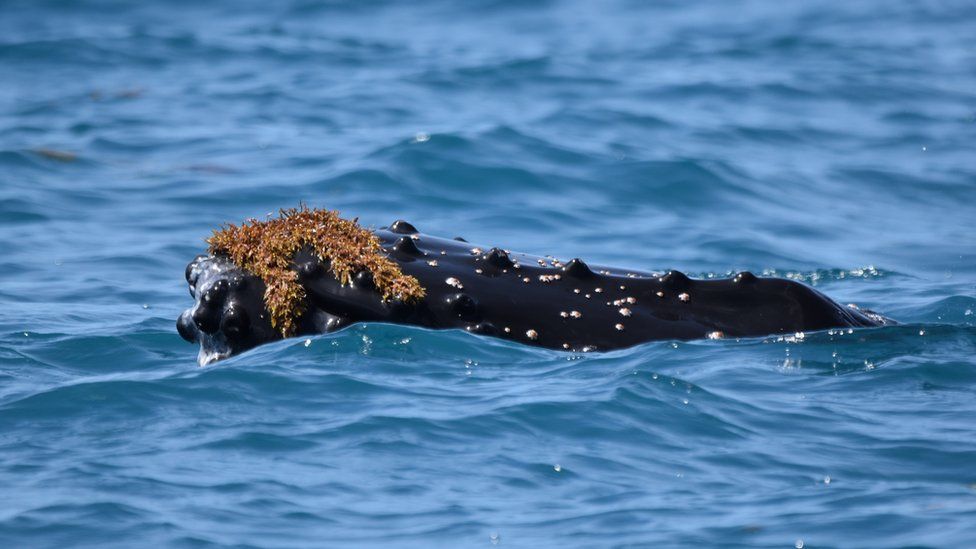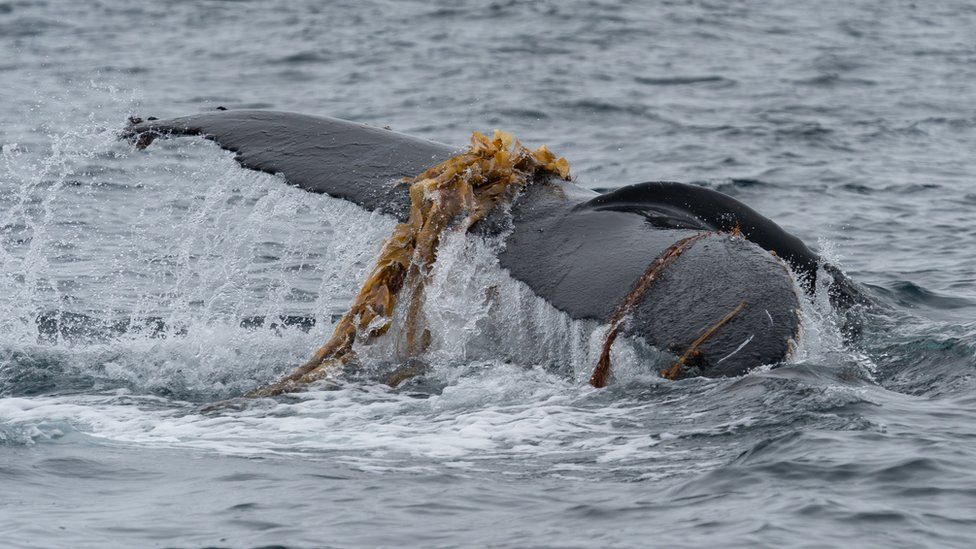BBC
Whales enjoy throwing seaweed on their heads and holding it in their mouths as makeshift toothbrushes, new research from Australia suggests.
Scientists examined the behaviour - called kelping - by analysing aerial footage and social media posts of more than 160 whale interactions.
They found kelping may also be used as a welcomed body scrub and as a way of strengthening social bonds.
The study has labelled the findings a "global phenomenon".

Whales have a cluster of nerve endings on their heads, and seaweed can provide sensory stimulation
Dr Olaf Meynecke, research fellow at Griffith University in Queensland, co-authored the study and used aerial observations, drone shots and social media footage to analyse the newly found behaviour.
Dr Olaf Meynecke, research fellow at Griffith University in Queensland, co-authored the study and used aerial observations, drone shots and social media footage to analyse the newly found behaviour.
Speaking to the BBC's The Happy Pod, Dr Meynecke said: "We've seen it in the northern and the southern hemispheres, while before there has only ever been one study that looked at a case study in Australia."
Dr Meynecke examined kelping in whales off the coasts of Alaska, mainland USA, Canada, Australia and French Polynesia.

Some individuals kept kelp and seaweed on their heads for more than 30 minutes at a time
While the marine mammals enjoyed rolling around in the seaweed, there was one spot in particular that the whales targeted.
"We have evidence of four different species and it seems all have a preference to place it on their heads," explains Dr Meynecke.
The observed species are classified as baleen whales, which have a large bristly whalebone at the front of their mouth to filter feed, instead of teeth.

Whales were seen using their pectoral fins to launch marine plants over their heads and bodies
Dr Meynecke says the whales enjoy throwing patches of seaweed up in the air and "using their heads to swim through it".
Baleen whales have a sensory system on their head and it is thought that touching the seaweed gives a nice sensation.
Because baleens do not bite, Dr Meynecke was surprised to see the whales plunging downwards with seaweed clasped in their mouths.
"One good reason for this could be that it's actually like a toothbrush, because that part of their mouths is extremely difficult to clean."
Whale friends

Seaweed can also help remove parasites and dead skin
However, Dr Meynecke says it could be a lot simpler: "Kelping can actually happen as a social activity."
The team observed three whales sharing kelp with each other before "another two whales came by to check out the scene".
"It was clear that this kind of interaction with the seaweed was a positive one that was shared with others."
The team noted the issue of large areas of seaweed and kelp dying in the areas where the whales roam, and how highlighting the positive impact of seaweed on the whales' wellbeing can help with conservation efforts.
However, Dr Meynecke says it could be a lot simpler: "Kelping can actually happen as a social activity."
The team observed three whales sharing kelp with each other before "another two whales came by to check out the scene".
"It was clear that this kind of interaction with the seaweed was a positive one that was shared with others."
The team noted the issue of large areas of seaweed and kelp dying in the areas where the whales roam, and how highlighting the positive impact of seaweed on the whales' wellbeing can help with conservation efforts.
No comments:
Post a Comment